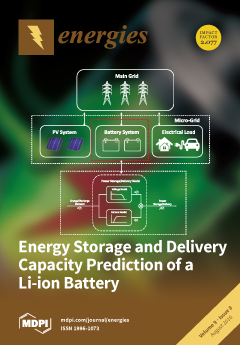A non-vacuum processing method for preparing polymer-based ZrO
2/TiO
2 multilayer structure antireflection coating (ARC) films for crystalline silicon solar cells by spin coating is introduced. Initially, ZrO
2, TiO
2 and surface deactivated-TiO
2 (SD-TiO
2) based films were
[...] Read more.
A non-vacuum processing method for preparing polymer-based ZrO
2/TiO
2 multilayer structure antireflection coating (ARC) films for crystalline silicon solar cells by spin coating is introduced. Initially, ZrO
2, TiO
2 and surface deactivated-TiO
2 (SD-TiO
2) based films were examined separately and the effect of photocatalytic properties of TiO
2 film on the reflectivity on silicon surface was investigated. Degradation of the reflectance performance with increasing reflectivity of up to 2% in the ultraviolet region was confirmed. No significant change of the reflectance was observed when utilizing SD-TiO
2 and ZrO
2 films. Average reflectance (between 300 nm–1100 nm) of the silicon surface coated with optimized polymer-based ZrO
2 single or ZrO
2/SD-TiO
2 multilayer composite films was decreased down to 6.5% and 5.5%, respectively. Improvement of photocurrent density (
Jsc) and conversion efficiency (η) of fabricated silicon solar cells owing to the ZrO
2/SD-TiO
2 multilayer ARC could be confirmed. The photovoltaic properties of
Jsc, the open-circuit photo voltage (
VOC), the fill factor (
FF), and the η were 31.42 mA cm
−2, 575 mV, 71.5% and 12.91%. Efficiency of the solar cells was improved by the ZrO
2-polymer/SD-TiO
2 polymer ARC composite layer by a factor of 0.8% with an increase of
Jsc (2.07 mA cm
−2) compared to those of fabricated without the ARC.
Full article





